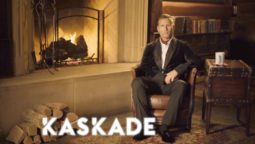In dance music there are almost infinite ways to create interesting sounds. Most songs we hear are peppered with sound after sound, all engineered to grab your attention and keep it. Some songs are mainly comprised of very complex sound effects, leaving the listener wondering as to how it was actually composed.
These sounds and effects are the result of years of exploration and hard work done by audio producers who want to bring a signature sound to their music. Some producers will record sounds and ambient noises to layer in their tracks to create a feel which you won’t find with any other artist. Many of these producers have amassed huge sound libraries of their work, which can be used in any new project they start.
Joey Youngman and the Beginning of the Sample Pack Era
Years ago I became friends with a house music producer from Northern California named Joey Youngman. Joey had a great work ethic, which required him to get in his studio every day to create something new for his productions. Realizing that he might not be inspired to write new music every day, Joey still sat in the studio creating sounds, sampler patches and effects that could be used in his future songs. As a result, when it came time to write new music, he had a vast library of sounds to choose from which made every one of his songs unique and personal.
Having a large library of sounds at his disposal greatly cut down the time he had to spend in the writing process. Too often when writing music, you can go down a rabbit hole of trying to get a certain effect or sample to sound just the way you like. This can really sidetrack your workflow and lead you astray from the project at hand. With a large library of sounds you can easily fill in the gaps of your song with new and exciting samples, which both keep the song interesting and keep your workflow on track.
Over time, most producers create a unique sound that easily defines them. Some producers do this so much that you can pick out one of their songs without ever previously listening to it. Joey Youngman was one of these producers. His unique house sound permeated the market so much that many other producers were rushing to create sounds just like his. After years of house production, Joey decided that it was time to move on to a new project, and became the guy we now know as Wolfgang Gartner. Seeing that his new project required a new feel with a new set of sounds, Joey licensed his whole set of samples to the company Loopmasters, who then sold the sounds online for future songwriters to use in their productions. This was Joey’s gift to house music and to this day, I still hear many sounds from that sample pack in new productions. You can find Joey’s sample pack here.
This was one of the first instances I remember of producers creating sounds for others to use in their songwriting. Since then, the sample library market has become a multi-million dollar industry with many companies selling sample packs from some of the biggest producers in music today. Regardless of genre, there is probably a sample pack which can help you get your project off the ground in an instant.
But What Do You Use Them For?
I write music for commercials, and I am often put in a position of trying to create music in a genre I’m unfamiliar with. My last client asked me to create a dubstep song for a commercial that was to air in Australia. Coming from a house music background, creating dubstep was the furthest genre away from my comfort zone and really caused me to dig deep into my bank of creativity. After working on the song for a few days, I felt that I had hit a wall and was out of fresh ideas to use on the project. When this happened, I went to the Loopmasters website and purchased a few dubstep sample packs which gave me fresh new ideas to work with in my production. In the end I didn’t end up including very many of the samples that I downloaded in the track, but I did use many of them for inspiration in the creative process.
A Few Tips and Some Good Advice
There are a few key things to remember about these sample packs. Because they come with the building blocks of prewritten songs, use tact when utilizing your samples. Every chance you get, you should be altering the samples in these kits to sound like your own. Use effects, warping and other techniques to create your own identity so that you won’t be accused of ripping off another producers sound. Once you start altering the samples, make sure and start creating your own banks of sounds to be used in your productions. You would be surprised at how many sounds from these sample kits are amalgamations of previously used samples and effects found in the industry today.
Most of the sample packs that you can purchase are royalty-free, meaning they can be used in your production without needing to pay any royalties to the company who sold them to you. Make sure and look at the licensing agreement found in the sample pack for any legal jargon to keep yourself out of hot water. The last thing you want is to be sued because your new hit song has samples from an unauthorized source.
Don’t Be a Dick
Finally, remember to purchase these sample packs. These packs are the product of many producers’ hard work. Many times, they are the culmination of years of creativity in the studio for these artists, and they’re really going out on a limb by releasing these sounds out to the public. So it is very important that we support these artists so they can afford to bring us new sounds for the future.
If you are looking for new and exciting sample packs for your current production, I would recommend looking at these sites to find the sound for you. Loopmasters, Camel Audio, Sony Creative and Prime Loops.







Join the discussion
comments powered by Disqus